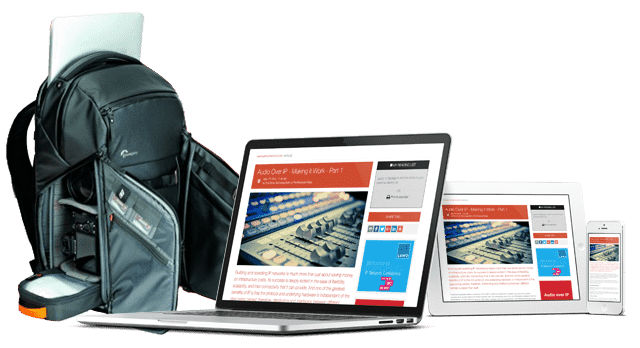Use Natural Sound to Jumpstart Your Video

Natural sound — the ambient audio around us at all locations — can be harnessed to add depth and detail for video productions. Or, it can be totally ignored. Learning the subtleties of natural sound can make anyone a more compelling video producer.
Perhaps the best place to begin with natural sound is to listen to what’s going on around you. On the location for every new scene, first be quiet and open your ears. What do you hear? Is the sound something that will add texture and a naturalness to your video? The answer is almost always yes. Make sure everyone around you is quiet and then record it.
Natural sound cues help to reinforce the scene. When in a train station, record the hustle and bustle of the crowd as the train whistles blow. Capture the ambient feel of the station. Always remember that in a video, both sound and picture are being captured. It has long been known that viewers value the sound more than the image. So always shape the sonic qualities of the place you are.
If you can, record the sound in stereo to broaden the sound stage, or in immersive audio if you want to bring the viewer inside the scene. This is where multichannel sound can create a “you are there” presence that no video can equal. Basic mono sound is better than nothing, but your astute competition is thinking beyond this.
Just as you might use a room microphone to capture the atmosphere in music recordings, the same techniques for natural sound apply to video shoots. Listen for sound cues that can tie or add to the story you are trying to tell. That sound doesn’t necessarily have to be in your shot at all. For example, the sound of a door closing outside of a scene might work. Experimentation is needed.
Getting good natural sound does add extra time to a shoot, but professionals know it is essential to the end product. Without it, either the video is boring and dry, or the editor will have to spend hours in a sound effects library or on a Foley stage trying to re-create the ambience. The time spent capturing natural sound on location is always off-set by the time in post-production trying to re-capture it.
Though many video crews use the camera with an attached shotgun mic to record natural sound, the best way is by a sound operator using a separate microphone and outboard audio recorder. The operator, concentrating on the needed sound, can get in close and monitor the audio as it is being recorded. The sound can be matched via B-roll or layered under an interview or narration in documentaries.
Using auto sync applications like Red Giant’s PluralEyes 4 or a modern video editor with sound sync capability, matching the sound and recorder is relatively easy. There are really no excuses these days for not getting and using natural sound.
In documentary and news production, sometimes the great moments come when the subject thinks the camera has stopped and is no longer rolling. It’s that extraneous ad lib — after the interview — that is often the best moment. Learn to always keep the camera and audio rolling, even when you say “cut.” You never know when that magic moment will come.
Build in the recording of natural sound into every scene on every video shoot. Experienced videographers know this, but many novice makers of video often have to learn this the hard way. Natural sound not only serves as credible background to support B-roll in scenes, but is important for interviews when the sound needs to convey the setting as well as the dialog. The sound of rain, street sounds or just the ambience of the room can be extraordinarily important in setting up an interview.
Not doing natural sound can end up costing producers big money in post-production, especially if a Foley stage is needed to re-create the sound that should have been recorded in the first place. Avoid this, especially on low-budget video productions.
Make recording natural sound part of the job — on every scene, every day. The payoff will be enormous.
You might also like...
Sports Graphics Production: The Rise Of The VP-AR Sports Studio
Live Sports Production has widely embraced Virtual & Augmented Reality techniques. Here we discuss the challenges of creating studio environments with a focus on camera motion tracking.
Big Chip Cameras For Broadcast: The History Of The Camera Sensor
Understanding the motivations and implications of using large sensors in broadcast, demands an examination of the historical relationship between cinema and broadcast camera technology & creative production techniques.
Immersive Audio 2025: The Rise Of Next Generation Audio
Immersive audio has gone spatial with the addition of height control and NGA formats to support it, and consumer demand is booming… but it is all still about the experience.
Live Sports Production: Exploring The Evolving OB
The first of our three articles is focused on comparing what technology is required in OBs and other venue systems to support the various approaches to live sports production.
Cloud Compute Infrastructure At IBC 2025
In celebration of the 2025 IBC Show, this article focuses on the key theme of cloud compute infrastructure and what exhibitors at the show are doing in this key area of technological enablement.












